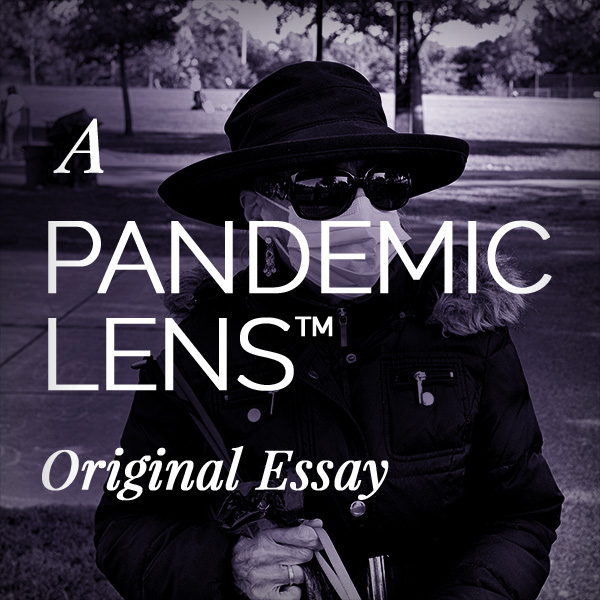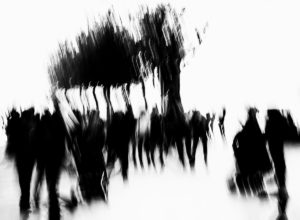Stress and Uncertainty in the Time of COVID-19
By J.Herman Kleiger, Psy.D. | October 3, 2020
 Look around. The signs are everywhere—lives lost and transformed in the year of the pandemic. One doesn’t need to be a psychologist to see the widespread effects of COVID-19 on our collective psyche. Losses are everywhere; grief is thick.
Look around. The signs are everywhere—lives lost and transformed in the year of the pandemic. One doesn’t need to be a psychologist to see the widespread effects of COVID-19 on our collective psyche. Losses are everywhere; grief is thick.
As mental health professionals, however, we have a unique perspective on how the pandemic impacts people. We are seeing an exacerbation of problems among vulnerable populations. We see spikes in substance abuse, as those in recovery find it harder to connect with their support systems. We are called about children who have regressed, seemingly losing a step on their developmental pathway. We find ubiquitous disruptions in sleep, worsening symptoms of OCD, increases in anxiety giving rise to panic disorders, and deepening depression in vulnerable youngsters and older adults, who feel increasingly separated and isolated.
As destabilizing symptoms of emotional distress increase, we also notice self-defeating behaviors employed to ward off intolerable anxiety and despair. Some of these carry substantial risks for self and others. We witness college students returning to campus, crowding together to make up for lost time and partying feverishly, some self-medicating with drugs and alcohol, as though this is a last hurrah. Or we hear about large mask-less gatherings at political rallies, as people seek to quiet their fear and doubt by identifying with groupthink denial. “Don’t worry. It’s all a hoax. Masks do nothing.”
Beside the fears, losses, and trauma giving rise to symptoms of distress or the self-destructive behaviors enacted to fend off anxiety, are there psychological principles that help us understand what we’re experiencing? An obvious answer is, yes, there are many. However, to begin, let’s look at how uncertainty, ambiguity, and lack of control are fueling our anxiety and shaping our efforts to cope.
A common thread in all of this—the symptoms of distress and the determined efforts to ward off fear and pain—is how we respond to the unknown. As humans, we seek to know what we don’t know. This gives us a sense of control, sometimes more illusory than real. Not knowing is stressful to many and terrifying to some. We crave certainty and look for ways to reduce complexity and ambiguity, both of which can fuel stress. COVID-19 presents us with a murky unknown.
In addition to the losses and stresses we’re experiencing, who among us knows where this is headed? How many more people will die? How many more will lose their jobs and their homes? How many students will fall behind and off the grid? Uncertainty can be threatening and ignite the dry timber of stress, leading to overt symptoms and destructive efforts to deny them. The world has become an inkblot, a pandemic-induced Rorschach Test, that confronts us with ambiguity and the anxiety of uncertainty.
There are adaptive and maladaptive ways to deal with uncertainty. We may rely on scientific authorities who strive to achieve some mastery of uncertainty-anxiety by developing models to capture the complexity and make the unknown more knowable and manageable. They help us prepare. We may also seek to reduce uncertainty-anxiety by simplifying complex situations to provide an illusion of control. Some look to political leaders, who provide false assurance by replacing complexity with simple messages like “this will all just go away.” In his efforts to reassure, the president recently slipped and used the term “herd mentality” when referring to “herd immunity.” Many laughed at his malapropism, but I think the notion of herd mentality is important.
British psychoanalyst Wilford Bion (Experiences in Groups. London, Tavistock,1961) wrote about prototypic kinds of unconscious anxiety and defenses that underlie behavior in large groups. He referred to four types of anxiety that occur in large groups as “basic assumptions,” which are collective mindsets that govern how groups cope with underlying anxiety. He called one group dimension the “Dependency Group,” where the essential aim of the group is to attain security by depending on an omnipotent leader who will alleviate anxiety and provide protection. Another group dynamic relevant to understanding current circumstances is the “Fight/Flight Group,” in which group members fight and flee from a common enemy, usually found outside the group. Both of these group dynamics help us understand how large numbers of people can subscribe to a set of implicit, sometimes explicit, beliefs and enact a “herd mentality” as means of reducing uncertainty- anxiety.
My grim thoughts about the ravages of COVID-19, the ubiquitous signs of grief and trauma, the worsening symptoms of anxiety and depression, and the sometimes self-destructive ways we herd together to lower uncertainty anxiety are by no means the last word. Look around and notice the ways we hold onto each other and continue to persevere. Look at the true grit and open-hearted generosity of those who have little but want to give their time, donate their blood, feed the hungry, and march for a more just society. Chuckle at pandemic humor like, “If your eyes are your best feature, this is your time!” But two concepts are most important in navigating the rocky landscape of pandemic uncertainty. They are Hope and Resiliency. More than anything, we see them in the smiling eyes from strangers and hear them in the laughter of our children.
Copyright © 2020 J. Herman Kleiger
A psychologist, psychoanalyst, and author, Dr. Kleiger served as an officer in the United States Navy for a decade. He then moved on to advanced post-doctoral training and eventually into private practice. His focus areas range from stress and mood disorders to psychosis and PTSD. Dr. Kleiger has authored/co-authored four professional books: Disordered Thinking and The Rorschach (1999), Assessing Psychosis (coauthored with Ali Khadivi, 2015), Rorschach Assessment of Psychotic Phenomena (2017), and Psychological Assessment of Disordered Thinking & Perception (coedited with Irving Weiner, forthcoming 2021). Unable to resist the play of imagination, in 2020 he penned a debut novel, The 11th Inkblot, a work of historical fiction with hints of magical realism.

